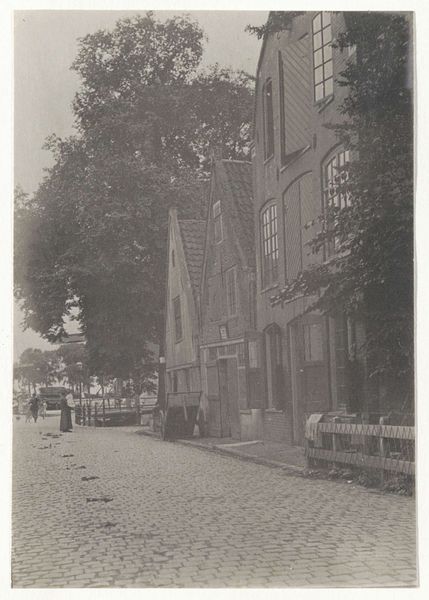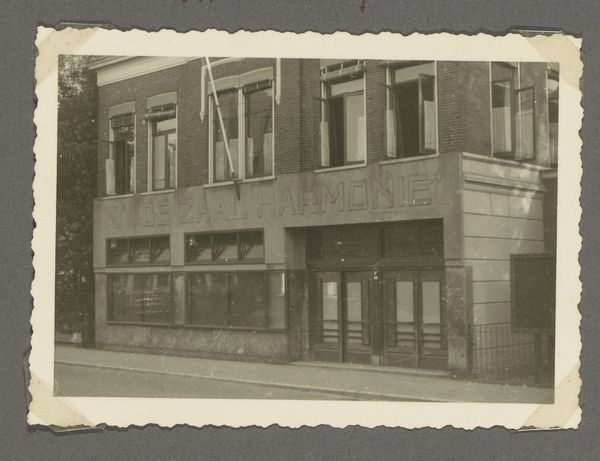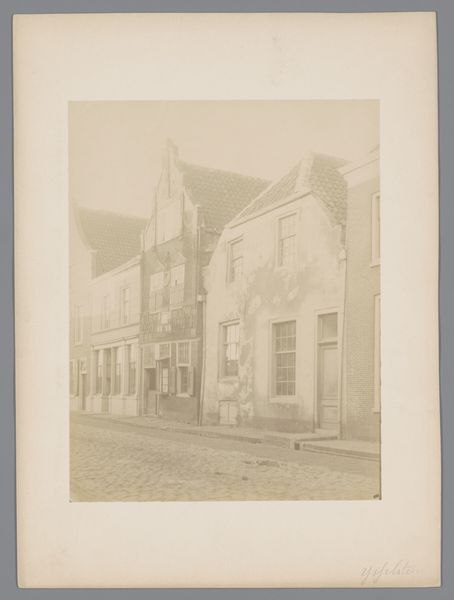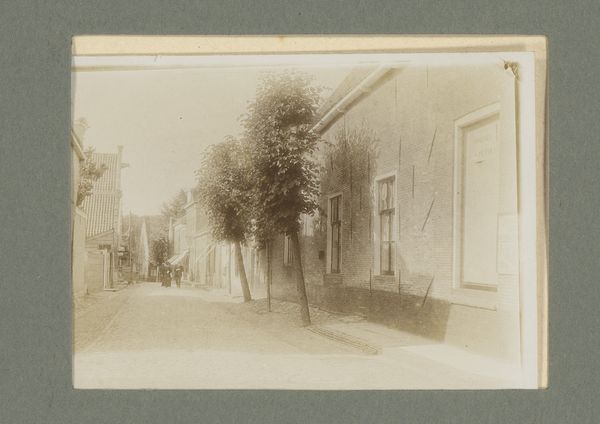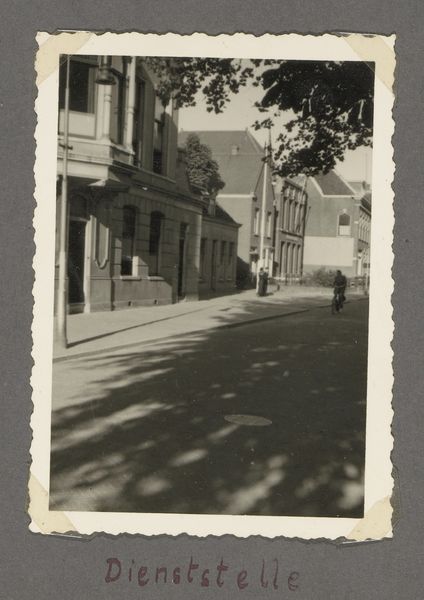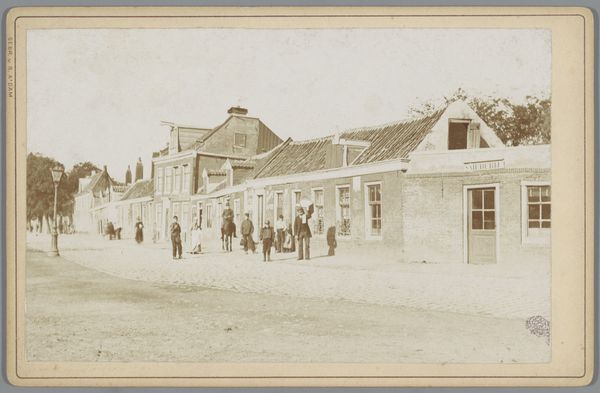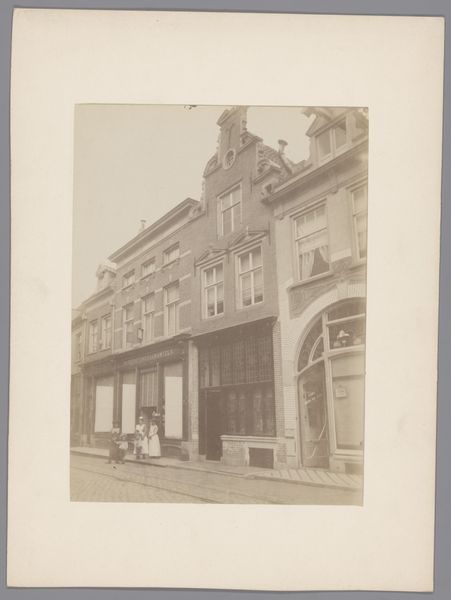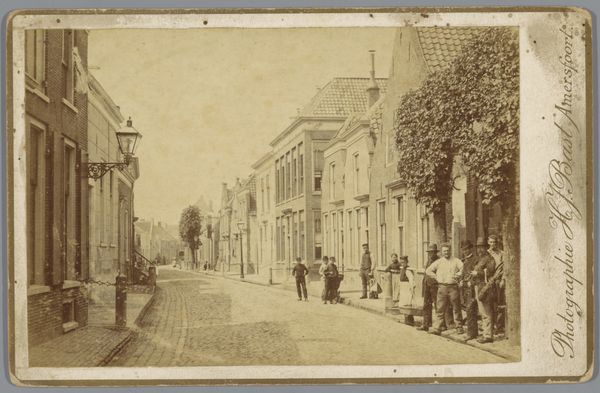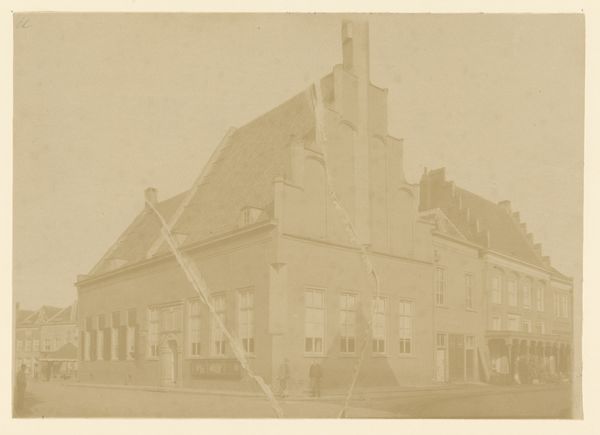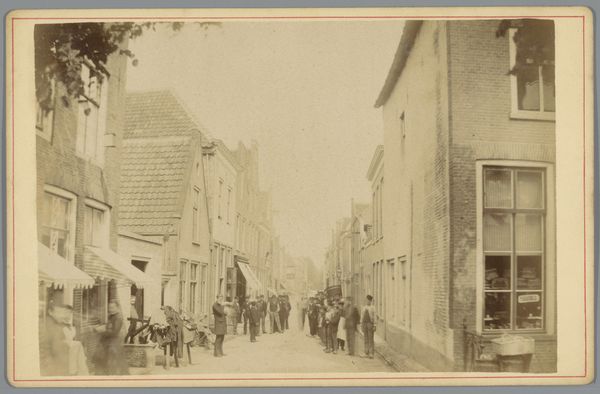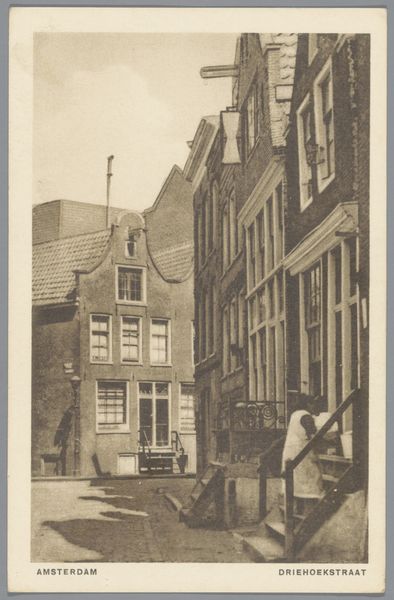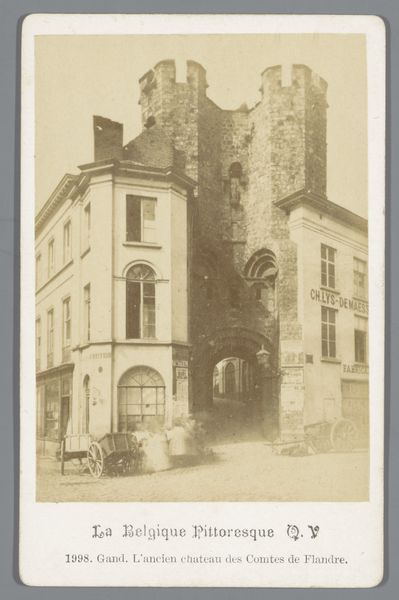
Gezicht op de Schiedamseweg te Vlaardingen met de Dienststelle van de 9. Minenräumflottille van de Duitse Kriegsmarine 1941 - 1945
0:00
0:00
photography, gelatin-silver-print
#
archive photography
#
photography
#
gelatin-silver-print
#
cityscape
#
street
Dimensions: height 63 mm, width 88 mm
Copyright: Rijks Museum: Open Domain
Editor: This gelatin-silver print, titled "Gezicht op de Schiedamseweg te Vlaardingen met de Dienststelle van de 9. Minenräumflottille van de Deutschen Kriegsmarine," is an anonymous work dating from 1941 to 1945. It depicts a street scene, and there’s something very stark about the light and shadow – a palpable stillness. What do you see in this piece? Curator: The stillness is powerful, isn’t it? And in that quiet, I see layers of coded information. The German naval office located on this street – the sign a blunt marker of occupation – imposes itself on the seemingly ordinary cityscape. Consider the symbolism of the Kriegsmarine itself; the "war navy" implies dominion over watery realms, signaling control and power. It makes me wonder what this street represented for the local people during wartime? Editor: So the image acts as a kind of symbolic record of the German occupation. The buildings feel... almost haunted by it. But does the Kriegsmarine presence inherently carry some kind of psychological weight for people today? Curator: The Kriegsmarine doesn't hold as much explicit contemporary symbolism. Yet, because images like these become historical documents, they allow future generations to grapple with difficult histories. In a way, that imposed visual element creates cultural memory, acting like an artifact carrying emotional associations of the past. Think of it as a cultural trigger, sparking recall and reevaluation. Does knowing the title, does this impact your perspective on the scene now? Editor: Absolutely. The title directs my gaze. It changes everything knowing that this placid scene isn't just a street, it's a site of occupation. Thanks for making me look more closely at the embedded context. Curator: And thank you for prompting us to delve into the deeper cultural memory contained within what seems, initially, like a simple street scene.
Comments
No comments
Be the first to comment and join the conversation on the ultimate creative platform.
